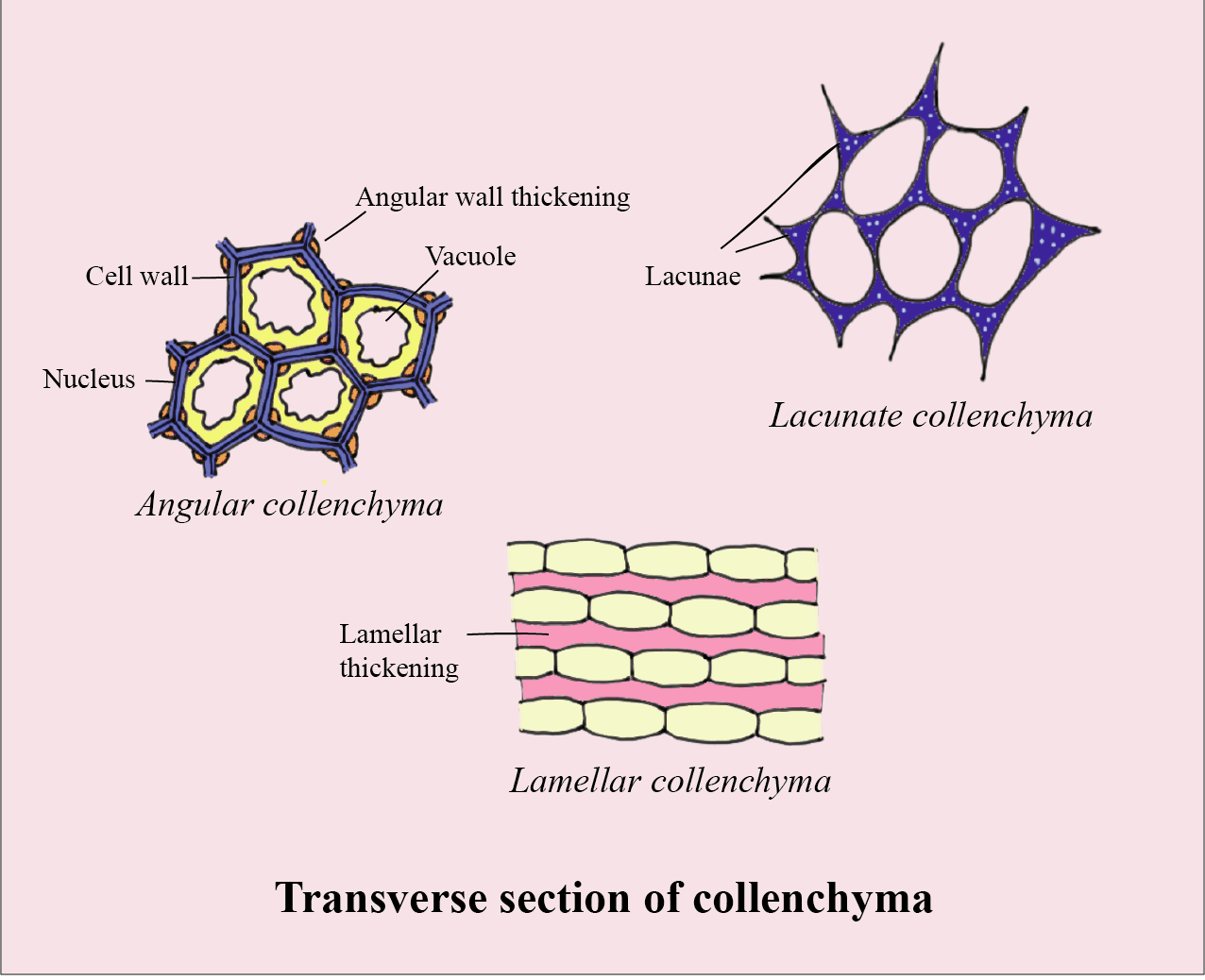
Draw the labeled diagram of the transverse section of the plant collenchyma cells.
Answer
569.7k+ views
Hint: Collenchyma cells are a part of the plant’s ground tissue system. They provide additional mechanical and structural support in particular regions and have a structure that enables this. They also provide stretchy properties to certain plants.
Complete Step by Step Answer:
Collenchyma tissue is composed of cells that are elongated with irregularly thick walls. This tissue provides structural and mechanical support, especially in the areas of growing shoots and leaves. Collenchyma tissue provides flexibility to the parts such as petioles, leaf veins, younger stems to allow for easy bending of these structures without any breakage. These tissues provide resilience to the strands in stalks of celery giving It a stretchy property.

The collenchyma cells are usually living, and have a thick primary cell wall that is made up of pectin and cellulose. The cell wall thickness is affected strongly by the mechanical stresses upon the plant.
Additional Information: There are four main types of collenchyma cells:
- Angular collenchyma that is thickened at the intercellular contact points.
- Tangential collenchyma cells that are arranged into ordered rows and thickened at the tangential cell wall face.
- Annular collenchyma that shows uniformly thickened cell walls.
- Lacunar collenchyma which is collenchyma with intercellular spaces.
The collenchyma cells are mostly found adjacent to the outer growing tissues which include the vascular cambium and these tissues are known for increasing the structural support and integrity.
Note:
- Other than the collenchyma, the ground tissues of the plants are also composed of parenchyma and sclerenchyma.
- The parenchyma cells act as the filler tissues in the softer parts of the plants as seen in the cortex, pericycle, pith, and medullary rays in the primary stem and root.
- The sclerenchyma cells are formed of thick lignified secondary walls and are often dead after maturation. They are the main structural support of the plants. They are further formed of fibers and sclereids.
Recently Updated Pages
The number of solutions in x in 02pi for which sqrt class 12 maths CBSE

Write any two methods of preparation of phenol Give class 12 chemistry CBSE

Differentiate between action potential and resting class 12 biology CBSE

Two plane mirrors arranged at right angles to each class 12 physics CBSE

Which of the following molecules is are chiral A I class 12 chemistry CBSE

Name different types of neurons and give one function class 12 biology CBSE

Trending doubts
One Metric ton is equal to kg A 10000 B 1000 C 100 class 11 physics CBSE

What is 1s 2s 2p 3s 3p class 11 chemistry CBSE

Discuss the various forms of bacteria class 11 biology CBSE

State the laws of reflection of light

Explain zero factorial class 11 maths CBSE

An example of chemosynthetic bacteria is A E coli B class 11 biology CBSE




